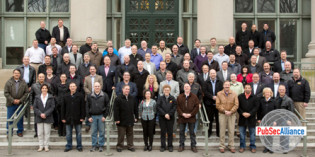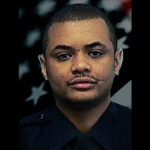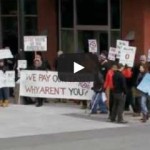Dear Anthem Protesters: Police are Not the Enemy

Tom Wetzel is a police lieutenant in Northeast Ohio.
By Tom Wetzel
Many years ago, when I was in the police academy, we spent a couple days on civil disturbance training. An older chief who was right out of central casting as a drill sergeant was the instructor, and he trained us as well as he could in the short time he had.
I suspect academy training time for civil unrest has increased since then, and the tactics have improved, as well. Advances have included more reactive field force teams, which respond in large numbers to problem areas while wearing state-of-the-art protective gear.
It is a good thing, as it now appears that being a cop today will likely involve more exposure to protests, both peaceful and violent, and the cause will probably involve some aggravation over a police use of force which was captured on a phone video.
And just as police tactics have improved, so have the strategies of illegal protests. Officers may find themselves taking cover not only from thrown bricks, but also may have to dodge bags of urine tossed at them, as well. And injuries to multiple officers is often a given during large scale civil disturbances.
As protests over police shootings continues to roil our country, as we see in St. Louis, Missouri, too many Americans will have their opinions shaped by repeated exposure to videos of alleged officer misbehavior as well as regular news footage of officers dressed in riot gear using force to control violent protesters. Unfortunately, this can fundamentally erode trust and confidence in our nation’s civil guardians.
We presently see this loss of trust in a glaring manner, with Americans taking a knee or sitting while others are standing to honor our flag during the national anthem.
It all started due to a belief that African-Americans are suffering from oppressive and racist police action while under the color of the stars and stripes. This manifestation didn’t happen overnight, and regardless of how much of it may be a misperception in today’s world is irrelevant, as perception is reality to many.
It really is unfortunate, as it betrays the outstanding work conducted by so many brave men and women throughout our country who strap on duty belts each day to protect and serve us. The risks they take have resulted in thousands of assaults against them on an annual basis. They have been seriously injured to the point of having to retire, been disfigured, and far too many lose their lives each year during that collective effort.
It all started due to a belief that African-Americans are suffering from oppressive and racist police action while under the color of the stars and stripes. This manifestation didn’t happen overnight, and regardless of how much of it may be a misperception in today’s world is irrelevant, as perception is reality to many.
It really is unfortunate, as it betrays the outstanding work conducted by so many brave men and women throughout our country who strap on duty belts each day to protect and serve us. The risks they take have resulted in thousands of assaults against them on an annual basis. They have been seriously injured to the point of having to retire, been disfigured, and far too many lose their lives each year during that collective effort.
Something has to give, as we now see a loss of trust by some, combined with a loss of interest to serve by others. That’s a recipe for stagnation. But there are some solutions.
Community policing principles have seen a resurgence over the years, and the bedrock of this style of police work is the recognition that we are in this together. Police officers can have no real success without a symbiotic relationship with those they serve. Cooperation is fundamental and it will be critical as we lay the groundwork for an improved understanding between “the server and the served.”
For a start, the “served,” especially those who have a historical suspicion of government agents, must recognize that there will always be some bad apples in police work. They will either start off with a rotten core or corrode from the outside in over time.
This is quite difficult to stop, as this problem is a dynamic of our flawed human nature. Finding more ways to weed bad ones out early is certainly worth pursuing, but it’s important not to confuse someone who makes a mistake or used bad judgement as needing immediate removal. And vilifying an entire profession of nearly 800,000 is not going to get much traction within the broader United States.
And in that vein, the “server” must recognize more fully that the concerns of some their customers are not without merit. Whether these are fears passed down through generations or based on current issues, we can and must do a better job of giving ear to their suspicions. Also, completing investigations of police misconduct can and must be done in a more timely fashion. Dragging these out only leads to a belief that a cover-up is in progress. It also causes serious stress to the officer who waits in uncertainty.
The American police model at present is a good system but every individual and institution can always be improved upon and ours is not different.
If changes don’t start taking place soon, we can only expect to see more kneeling, fewer people who want to be cops, and a realization that we better get used to the smell of OC pepper spray, which often gets dispersed at protests when they go rogue.
This op-ed originally appeared on Cleveland.com. Tom Wetzel is a police lieutenant in Northeast Ohio and an adjunct professor of community policing at Lakeland Community College.














